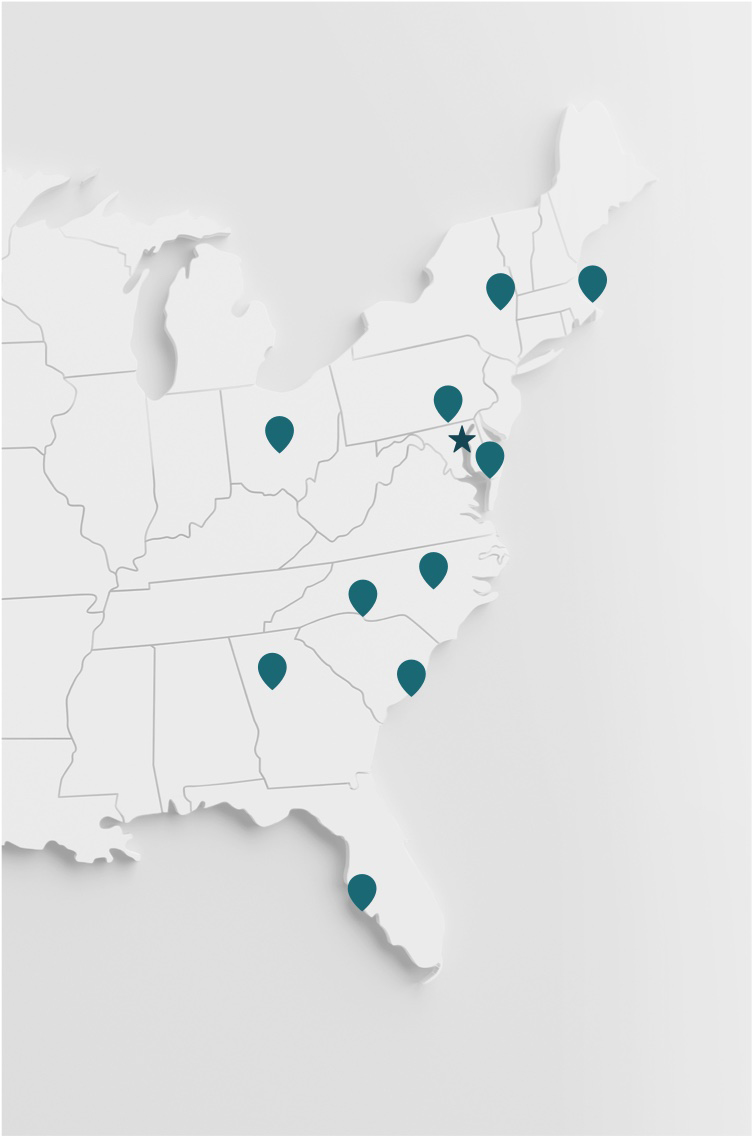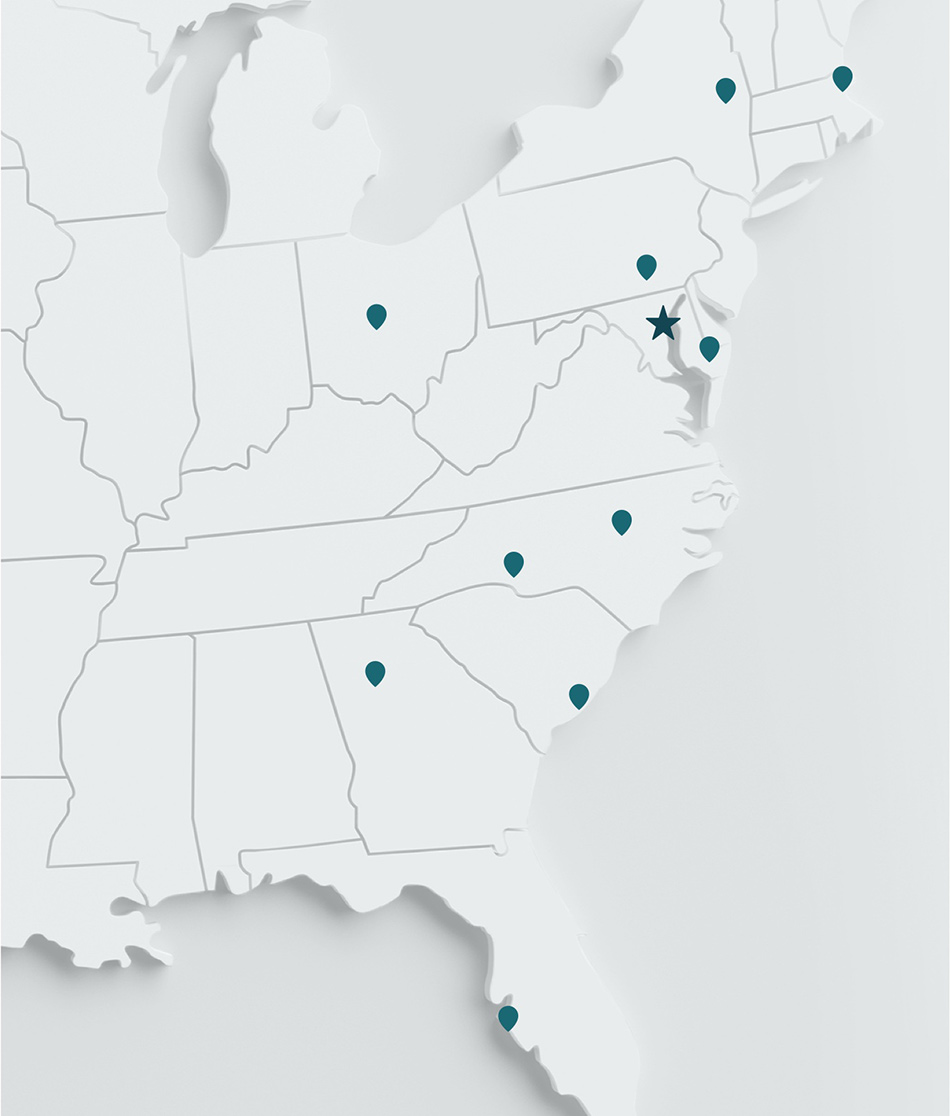
A previous version of the article below appeared in the First Quarter 2023 issue of District Energy Magazine. To learn more about District Energy or read the full publication, please visit the website. Subscriptions are FREE.
Global warming is one of the most important challenges of our time, and its solution is often summed up in the word “decarbonization,” which primarily means reducing greenhouse gas emissions by eliminating the use of fossil fuels. Strategic electrification, one approach to decarbonization, focuses on electrifying heating, cooling and transportation technologies and then powering them with 100% carbon-free electricity.
In the U.S., about 40% of electricity already comes from carbon-free sources, a roughly even split between nuclear power and renewable resources (mostly wind, solar and hydro.) Many local governments, corporations and private or public institutions have announced ambitious dates by which they will use only 100% carbon-free electricity. The state of New York has even banned natural gas hook-ups in all new construction to promote electrification.
Many projections cite the Biden administration’s intent to achieve a 50% reduction in U.S. electricity sector emissions by 2030 (compared to 2005, the baseline peak), and for the entire country to be using 100% carbon-free electricity by 2035. This will require not only developing carbon-free solutions for existing fossil fuel-based electricity sources -which currently provided 60% of all U.S. electricity-but also expanding electrical generation capacity as we electrify heating and transportation.
And although electricity, steam, hot water and hydrogen are all carbon-free “energy carriers” -in that they don’t produce emissions at the point of consumption-they still need to be produced by carbon-free sources to be truly carbon-free forms of energy.
According to Princeton University’s Net Zero America Project, which models five ways forward, electrification, if it is to be the predominant path to meet the Biden administration’s decarbonization goals, will require the U.S. to grow its current electricity production capacity by 115% to 170% by 2050. This would require rapid mobilization of infrastructure projects on par with what the U.S. accomplished nationally with electrification over the entire course of the 20th century.
Grid modernization – One of the most significant concerns with broad electrification is the current condition of our national grid, which is actually three physically separate systems: the eastern grid, the western grid and the Texas grid. Regional operators within each grid coordinate with each other and with publicly owned or publicly regulated utility companies that manage physical assets and deal directly with consumers. A utility company’s integrated resource plan, or IRP, can provide direction for generation and transmission upgrades required to accommodate increasing electrification and distributed generation. The Federal Energy Regulatory Commission is charged with regulating interstate transmission of natural gas, oil and electricity. But each state can approve or deny permits for interstate transmission line projects, which can delay or block transmission upgrades and renewable energy projects. Streamlining permits and approvals for interstate projects is key to unlocking the benefits of renewable resources, energy storage and system reliability.
Renewable energy – A 95% reduction in the cost of renewables over the past decade or so, as noted by many and perhaps especially well by Rondo Energy CEO John O’Donnell, “means that intermittent electricity is becoming – has become – the cheapest form of energy that humans have ever known.” Supportive public initiatives like the Inflation Reduction Act of 2022 will help spur technological and financial innovation while making renewable energy technologies more mainstream and affordable. Some of the biggest challenges to renewable energy projects are permit and siting approvals. An estimated 1350 OW of renewable energy production and 680 OW of storage are currently waiting for necessary approvals to move forward. The technology is available, and the financial models pencil out, but streamlining the approval process remains a hurdle. Advanced geothermal, using the earth’s heat energy directly, is another promising carbon-free capacity strategy.
Demand control – Short bursts of electrical demand can also be managed by control programs that pay residential, commercial and industrial consumers to reduce their consumption on short notice when electricity is in high demand, particularly on hot summer days. Utility companies are also exploring distributed energy management systems, or DERMS, to provide more sophisticated metering and computerized, real-time control. These tools help balance and manage the bi-directional flow of electricity between distributed generation sources and nearby substations. More sophisticated grid management will also allow renewable energy resources to be more smoothly integrated into grids. Creative developments in grid-interactive technologies are also underway. Even electric vehicles could play a role in systemwide electricity storage and demand management. And battery deployment has increased substantially over the past five years – good news because energy storage is key to balancing intermittent resources like wind and solar.
Nuclear – Nuclear energy provides a carbon-free source of reliable, firm capacity, so many electrification advocates are in favor of extending permits for existing nuclear facilities. Constructing new, large-scale plants is a long, complex process. But small modular nuclear reactors, or SMRs, may be able to provide carbon-free power in a more cost effective and manageable way.
Equipment efficiency – For district energy systems, the key to strategic electrification without a significant jump in peak-management complications is to utilize heat pump equipment with a high systemwide coefficient of performance, or COP. A heat pump can only generate hot water, not steam, and transitioning an entire campus distribution system from steam to hot water is a significant undertaking. But eliminating steam significantly reduces heat losses, and the lower the hot water supply temperature, the higher the COP. When tied to low-grade “waste” heat or geothermal bore fields, heat pumps can deliver as much as seven times more energy than they use by simply moving heat to where it is needed. This extremely efficient use of energy also helps manage electrical peaks. Facility operators often find that the electrical peak from winter heat pump operations is similar to the summer peak from existing chiller operations. This flattening of electrical peaks can reduce or eliminate the need for system upgrades when electrifying a district energy heating system.
Resilience and redundancy – Given the frequency of electrical outages caused by wildfires, extreme weather and system failures, grid reliability is a valid concern. As with any system design, multiple layers of redundancy must be incorporated. Many facilities maintain standalone, fossil fuel-powered generators. Others use fossil fuel-powered equipment, such as natural gas condensing boilers, to both supplement electric heat pumps during winter peaks and to provide a fuel-switching option during electrical outages. Microgrids can be configured to isolate facilities from the public utility grid in case of an outage. A full portfolio of technologies, including those that rely some on fossil fuels, will provide adequate redundance as we navigate the transition to a new energy era.
Inclusion – Historically, ambitious infrastructure projects like power plants and highways have often compromised the health and connectivity of communities. Policies like those included in the IRA, for good reason, include support for prevailing wage labor rates, apprenticeship opportunity requirements, preferences for domestically made products, and investment in
“energy communities” that experience significant job loss due to contraction of local fossil fuel industries. Transition calls for a delicate balance between incentivizing technological and financial innovation and deployment while honoring meaningful equity and social justice concerns.
The transition to a clean energy economy is an ambitious national challenge, but the U.S. has a history of succeeding with big undertakings. Given the complexity and the urgency of circumstances, it will be important to pursue broad technical, financial and policy priorities with a steadfast dedication to collaboration. If we can do that, we can expect to see substantial progress in our own lifetimes while laying the groundwork for future generations.
Martha Larson is director of sustainability at RMF Engineering.

